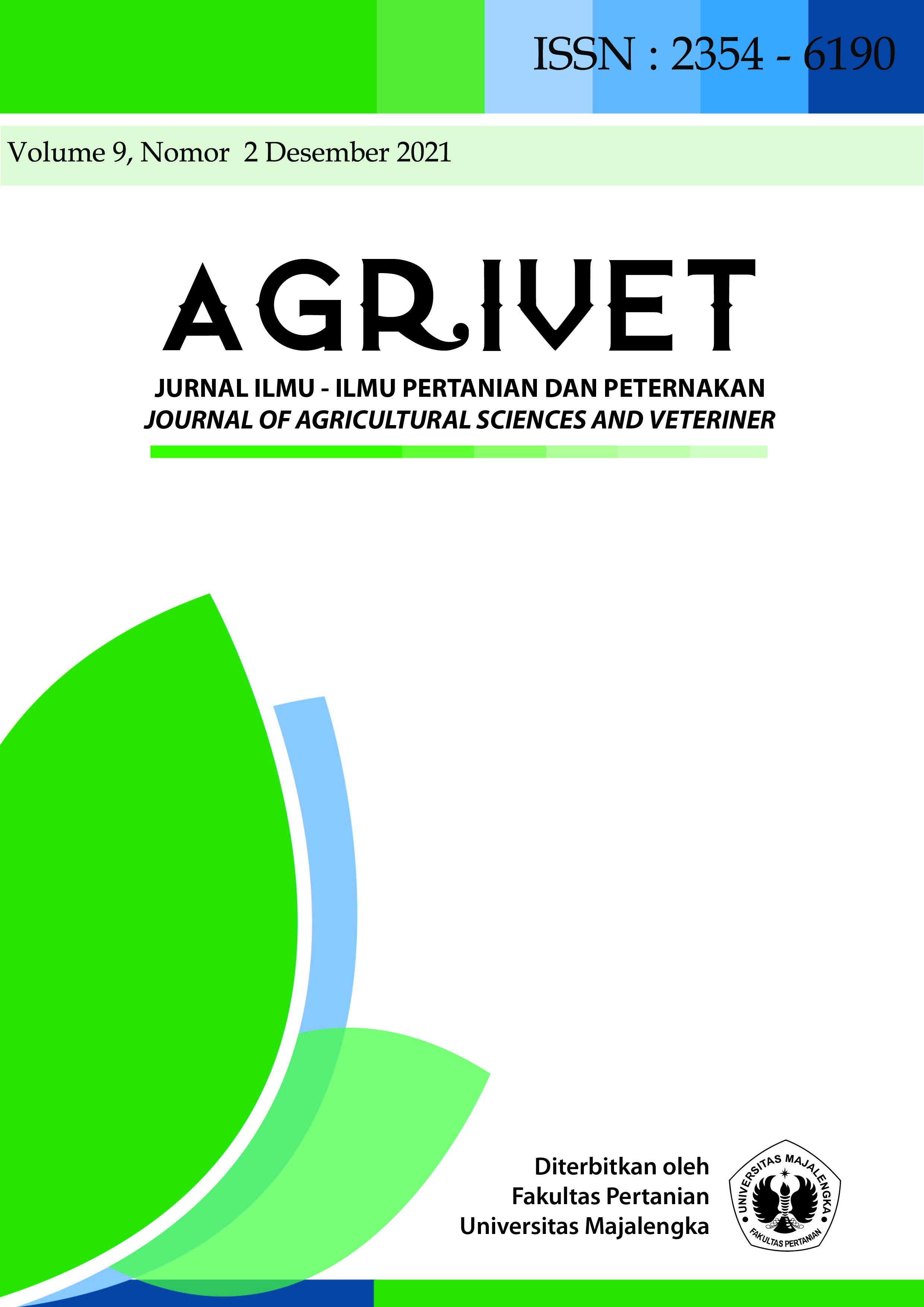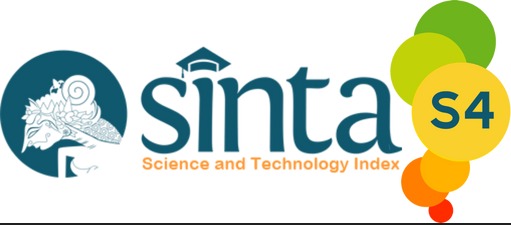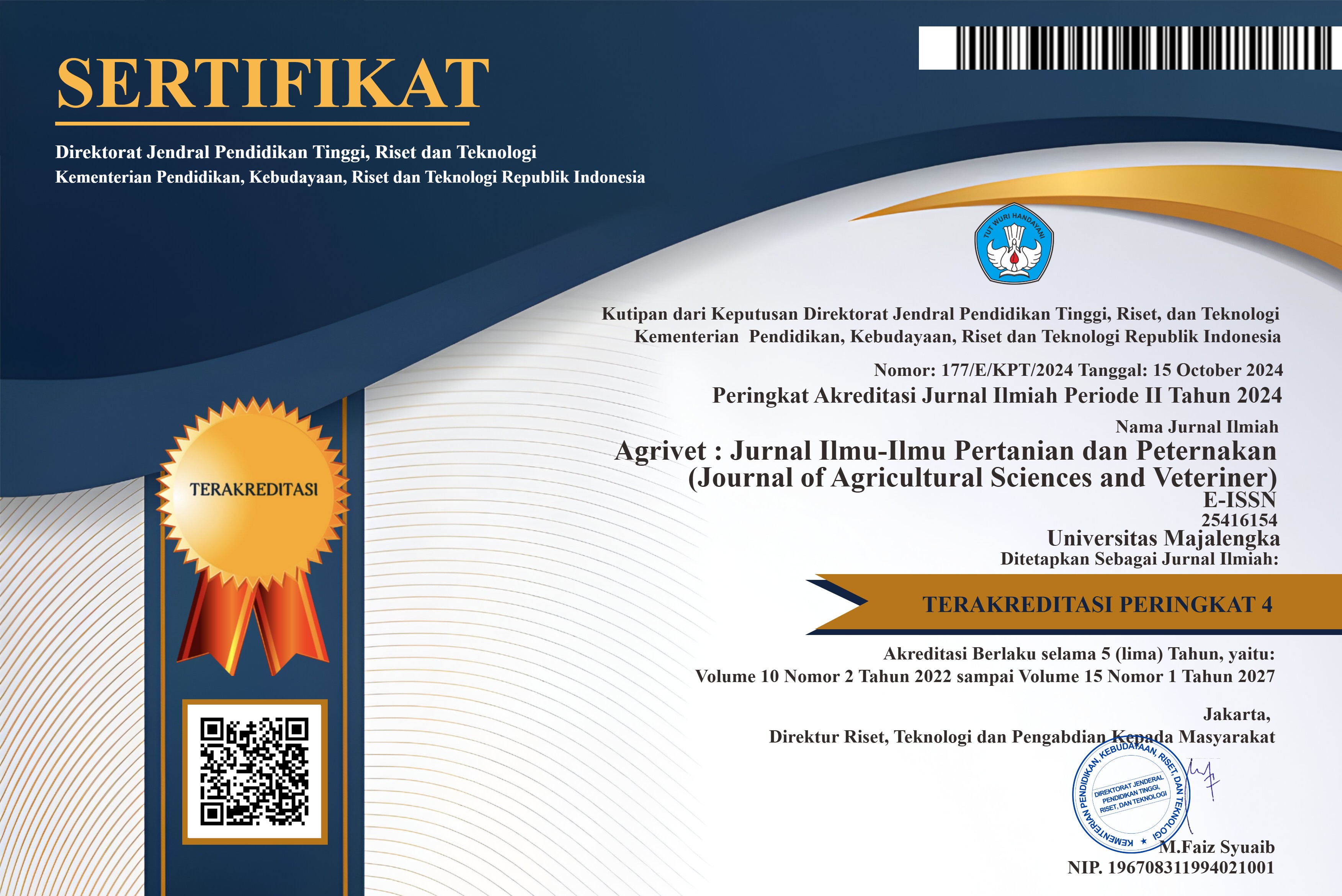POTENSI DAUN KATUK SEBAGAI PENURUN KADAR LEMAK PADA PRODUK UNGGAS MELALUI SKRINING FITOKIMIA
DOI:
https://doi.org/10.31949/agrivet.v9i2.1697Abstract
Katuk leaves are known as vegetables that are rich in nutrients in several regions in Indonesia. In addition, it has the potential as an herbal medicine that needs to be developed based on its chemical compound content. The groups of chemical compounds contained in plants can be analyzed using a phytochemical screening test. Phytochemical screening was carried out on katuk leaf extract samples obtained through the maceration method using methanol solvent which was then concentrated using a rotary evaporator. Phytochemical screening test consisted of phenolic, tannin, flavonoid, saponin, triterpenoid, steroid, and alkaloid screening. Furthermore, the test results will be used as a basis for researchers in developing the potential of katuk leaves as herbs to reduce fat content in poultry product. The class of compounds, especially flavonoids, saponins, and tannins has a role in reducing fat accumulation. The test results showed that the positive katuk leaf extract contained moderate amounts of phenolic compounds, tannin, flavonoids, saponins, triterpenoids, and alkaloids. That is, katuk leaves have the potential as an herb that can reduce fat levels in poultry products.
Keywords:
Katuk leaf extract, katuk leaves, methanol, phytochemical screening.Downloads
References
KODAMA, D. H., GONCALVES, A. E. D. S. S., LAJOLO, F. M., & GENOVESE, M. I. 2010. Flavonoids, total phenolics and antioxidant capacity : comparison between commercial green tea preparations. Food Science and Technology, 30 (4), 1077-1082.
ASTUTI, J., & RUDIYANSYAH, G. 2013. Uji Fitokimia dan Aktivitas Antioksidan Tumbuhan Paku Uban (Nephrolepis biserrata (Sw) Schhott). Jurnal Kimia Khatulistiwa, 2 (2).
KONWAR, B. K., & DAS, P. C. 1990. Tea waste-a new livestock and poultry feed. Technical bulletin, (2), 1-9.
KRISTANTI, A. N., AMINAH, N. S., TANJUNG, M., & KURNIADI, B. 2008. Buku ajar fitokimia. Surabaya (ID) : Airlangga University Pr, 3-161.
MARZO, F., TOSAR, A., & SANTIDRIAN, S. 1990. Effect of tannic acid on the immune response of growing chickens. Journal of animal science, 68(10), 3306-3312.
SANTOSO, U. 2014. Katuk tumbuhan multi khasiat. Bengkulu : Badan Penerbit Fakultas Pertanian Unib.
ROBINSON, T. 1991. Kandungan organik tumbuhan tingkat tinggi. Bandung : Penerbit ITB.
SUSANTI, N. M. P., BUDIMAN, I. N. A., & WARDITIANI, N. K. 2014. Skrining fitokimia ekstrak etanol 90% daun katuk (Sauropus androgynus (L.) Merr). Jurnal Farmasi Udayana, 3 (1), 279778.
TUGIYANTI, E., SUSANTI, E., & SULISTYAWAN, I. H. 2017. Pemanfaatan ampas the sebagai feed aditif pakan unggas dan anti bakteri terhadap Escherichia coli. Prosiding seminar teknologi agribisnis peternakan (STAP) fakultas Peternakan Universitas Jenderal Soedirman (Vol. 5, pp. 54-62)
WINARSIH, H. 2007. Antioksidan alami dan radikal bebas. Yogyakarta. Kanisius.
SANTOSO, U. 2001. Reduction of fat accumulation in broiler chickens by Sauropus androgynus (Katuk) leaf meal supplementation. Asian-Australian Journal of Animal Science, 14(3), 346-350.
ZADERNOWSKI, R., NACZK, M., & NESTEROWICZ, J. 2005. Phenolic acid profiles in some small berries. Journal of Agricultural and Food Chemistry, 53(6), 2118-2124.
Published
How to Cite
Issue
Section
License
An author who publishes in the Jurnal Agrivet agrees to the following terms:
- Author retains the copyright and grants the journal the right of first publication of the work simultaneously licensed under the Creative Commons Attribution-ShareAlike 4.0 License that allows others to share the work with an acknowledgment of the work's authorship and initial publication in this journal
- The author is able to enter into separate, additional contractual arrangements for the non-exclusive distribution of the journal's published version of the work (e.g., post it to an institutional repository or publish it in a book) with the acknowledgment of its initial publication in this journal.
- The author is permitted and encouraged to post his/her work online (e.g., in institutional repositories or on their website) prior to and during the submission process, as it can lead to productive exchanges, as well as earlier and greater citation of the published work












